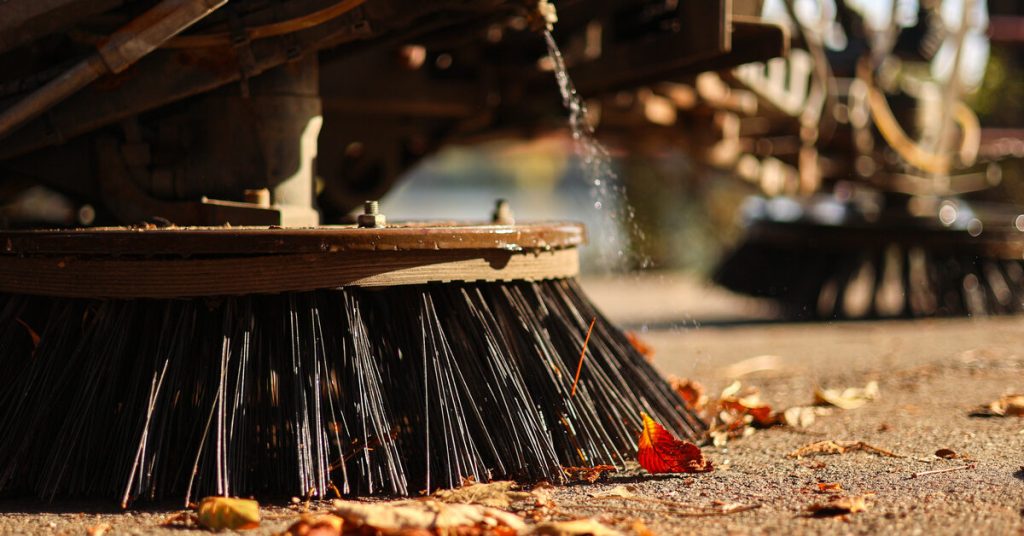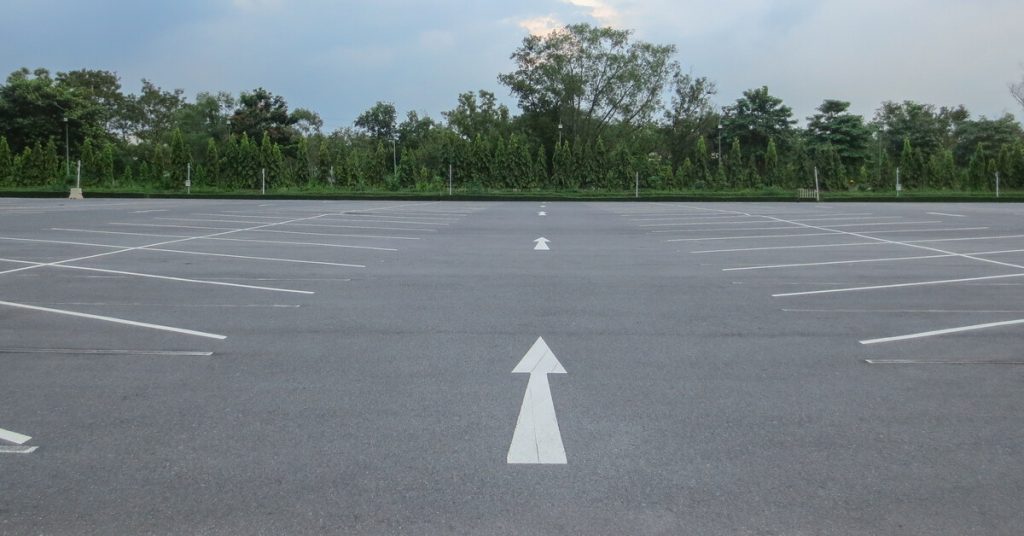The parking lot plays an important role in making a good impression on the clients that drive up to your business day in and day out. Do you want them hitting potholes and seeing debris strewn across the asphalt? Of course not.
A well-maintained parking lot not only enhances curb appeal but also ensures safety for both drivers and pedestrians. Cracks, potholes, and faded markings can create hazards and inconvenience, potentially deterring customers from returning. Taking the time to properly care for your parking lot can save you money on costly repairs in the long run and create a welcoming environment for clients, employees, and visitors alike.
You are responsible for maintaining your commercial parking lot to the best of your ability. Let’s take a look at all the best practices for keeping it in the best shape possible.
Regularly Inspect for Damage
You may not notice problems with your pavement while going about your daily business. However, with a focused inspection, you won’t miss the cracks, potholes, faded paint, water pooling, or other signs of wear and tear.
If you don’t spot these signs and resolve them, small issues can quickly escalate into a disaster. If water seeps into an unnoticed crack in the parking lot pavement, for example, you may soon have a pothole to fill instead. And if you don’t realize you have poor drainage, one sudden storm can create a full-on flood.
That’s why the first step in maintaining your commercial parking lot is setting up regular inspections. At a minimum, schedule monthly or quarterly walk-throughs to assess your parking lot’s condition and prevent small problems from turning into significant expenses.
Promptly Repair Cracks and Potholes
During your inspections, the most critical issues you may see in the pavement are cracks and potholes. These are not just eyesores—they can damage vehicles, cause trips and falls, and degrade your lot’s structural integrity over time.
When cracks appear, you should take immediate action to seal them. Use asphalt crack filler to patch small cracks, and seek professional asphalt patching for larger cracks.
You can fill small potholes with a cold patch asphalt mix, which temporarily restores the surface. However, for larger or deeper potholes, it’s best to hire a professional paving contractor who can ensure a durable and long-lasting repair.
Check the Drainage

To prevent cracks and potholes from popping up in the first place, you need to make sure your drainage system functions as intended. Otherwise, standing water can seep into small cracks, expand during freezing conditions, and break the surface over time.
During your regular inspections, pay close attention to signs of poor drainage. Look for areas where water pools after rain or where runoff doesn’t flow away from the pavement.
Check your storm drains and gutters to ensure they’re clear of debris. Clogged drains can quickly lead to water buildup, so clean them out regularly.
If you notice persistent pooling or slow drainage, consider grading the surface to improve water flow or installing additional drainage systems like trench drains or catch basins. If there are extensive drainage issues, it’s wise to consult with a professional paving contractor who can offer advice on the most effective solutions for your lot.
Apply Sealcoat to the Asphalt
Another task to include as part of your best practices for maintaining your commercial parking lot is sealcoating. This process applies a protective layer over the asphalt, shielding it from UV rays, water damage, oil spills, and general traffic wear.
How Often Should You Apply Sealcoat?
For the best results, you should apply a sealcoat around every 2-3 years, depending on the level of traffic your parking lot endures.
This measure will help you limit cracking, fading, and other signs of wear and tear on the asphalt. Sealcoating will also enhance the appearance of your asphalt, giving your parking lot a fresh, uniform look. It fills in surface imperfections, creating a smoother, more professional finish that leaves a positive impression on customers and visitors.
How Do You Sealcoat a Parking Lot?
For optimal results, ensure the surface is clean and free of debris before applying the sealcoat. You should repair any cracks or potholes in advance to prevent further damage underneath the sealant. Additionally, aim for mild, dry weather conditions to allow for proper adhesion and curing.
By making sealcoating a regular part of your maintenance routine, you’ll save money in the long run. The goal is to reduce the need for costly repairs and prolong the overall life of your parking lot.
Repaint Parking Lot Striping When It Fades
Clear and visible parking lot striping plays a vital role in maintaining order and safety. Over time, however, the paint can fade due to weather, traffic, and general wear, making it harder for drivers and pedestrians to safely navigate your lot. Faded lines can also give a poor impression to customers, potentially signaling neglect.
How Often Should You Restripe?
As a general rule, you may want to repaint every 1-2 years to keep your markings bright and functional. However, this depends on traffic levels and environmental conditions, so just keep an eye out for when the striping begins to fade.
How Do You Stripe a Parking Lot?
To start, make sure the surface is clean, dry, and free of debris. Use high-quality, durable paint designed specifically for outdoor pavement.
For large areas or intricate layouts, consider hiring a professional to ensure precision and compliance with local regulations, such as ADA guidelines for accessible parking spaces.
Stick to a Sweeping Schedule

Leaves, dirt, trash, and gravel can quickly accumulate in parking lots, especially those located near high-traffic areas or construction zones. If you want to make a good impression on the customers and visitors to your business, cleaning the lot and removing debris will be as essential as maintenance.
Sweeping the parking lot is also necessary for preventing bigger issues. Over time, the debris can grind against the asphalt, leading to cracks and potholes that are costly to repair.
Leaves and trash can clog drainage systems, causing water to pool and weaken the surface. If left unchecked, this can lead to erosion, structural damage, and even safety hazards for drivers and pedestrians.
Regular parking lot sweeping not only keeps your lot looking professional but also extends its lifespan and minimizes costly repairs down the road.
How Often Should You Sweep the Parking Lot?
How often you should sweep depends on the parking lot’s usage and location. High-traffic lots or lots near construction may require daily or weekly sweeping. For smaller businesses or less busy areas, monthly sweeping might suffice.
Just be sure to set a sweeping schedule that works for you and your business and stick to it.
How Do You Sweep a Commercial Parking Lot?
Schedule sweeping during off-hours to avoid disrupting customers or staff.
Use a quality broom or a mechanical sweeper for thorough cleaning, paying close attention to corners and edges where debris tends to accumulate. You can also conveniently contract top-tier professional services from CPM Sweeping in Nashville, Tennessee.

